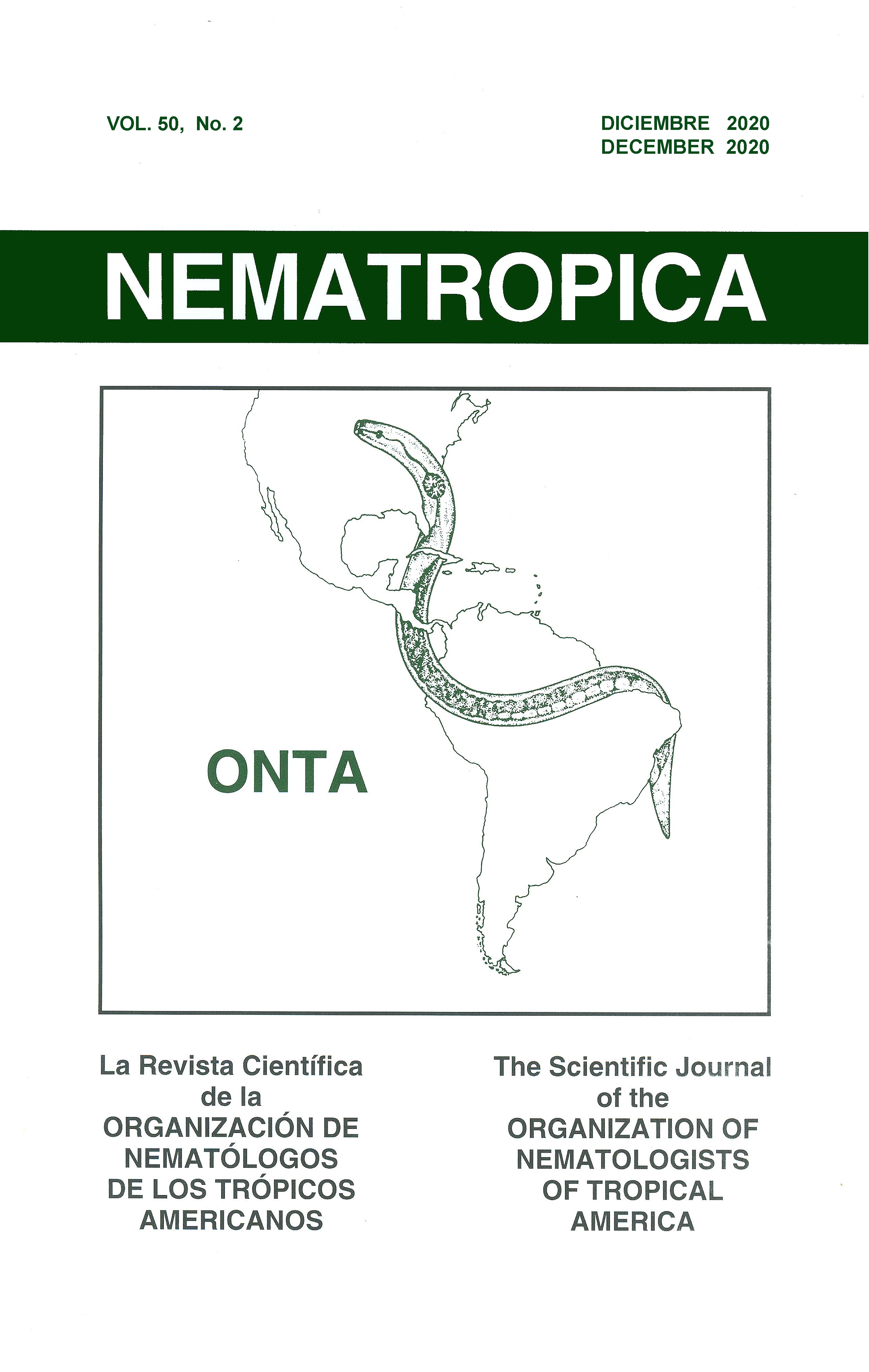RESPONSE OF SOYBEAN CULTIVARS TO PRATYLENCHUS ZEAE
Resumo
In Brazil, soybean is commonly rotated with Poaceae plants, especially maize and brachiaria, which are susceptible to root-lesion nematodes, Pratylenchus spp. This study assessed the response of soybean cultivars to Pratylenchus zeae in a comparative analysis with Pratylenchus brachyurus. The experiment was conducted in a greenhouse, with 12 treatments (soybean cv. DM 5958 IPRO, NS 5959 IPRO, TMG 7262 RR, BMX Potência RR, M5947 IPRO, TMG 7062 IPRO, M6410 IPRO, M6210 IPRO, M5917 IPRO, and NA 5909 RG, with rice and maize as controls) and two evaluation periods. Four soybean cultivars were reevaluated in another experiment to determine the reproduction and penetration of P. zeae. Reproduction of P. zeae on soybean was lower than that of P. brachyurus. However, total number of P. zeae in the roots of soybean cv. DM 5958 IPRO, NS 5959 IPRO, and M6210 IPRO was close to the number of nematodes inoculated, demonstrating that P. zeae can penetrate and maintain its population on this crop. Similar results were observed in the third experiment, especially for cv. M6210 IPRO. Pratylenchus zeae penetrated soybean roots and population density increased with time, however, population density increase was lower than on maize. The results show that P. zeae population densities should be closely monitored in fields with a soybean-poaceous rotation.

